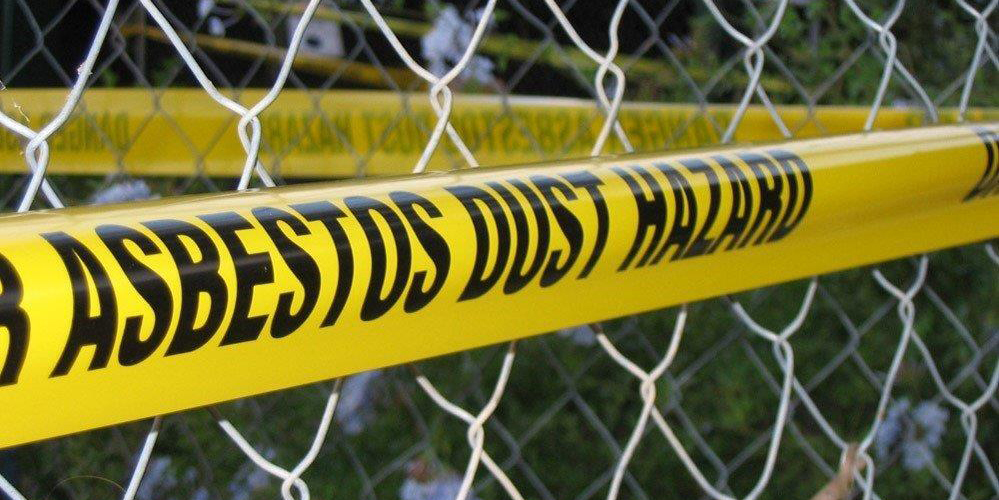
Asbestos: the seemingly perfect construction material with its strength, durability and fire-resistant properties. It’s no wonder it was used extensively in building materials in the 20th century. However, this ‘miracle’ material was later discovered to be a silent killer.
In this blog post, we dive into the importance of asbestos testing and inspection. This mineral is not to be taken lightly; the consequences of ignoring its potential presence can be deadly.
What is asbestos?
Asbestos is the name for a group of six naturally occurring minerals that have long, thin fibres and are highly heat-resistant.
The six different minerals are:
-
Chrysotile: this white curly fibre, also known as ‘white asbestos’ is one of the most commonly used forms of asbestos
-
Crocidolite: this is the most dangerous type of asbestos due to its thin, needle-like fibres that can penetrate the lungs, also known as ‘blue asbestos’
-
Amosite: these fibres are straight and grey-brown and were mainly used in thermal insulation products, also known as ‘brown asbestos’
-
Anthophyllite: a rare type of asbestos that was mainly used in composite flooring products
-
Tremolite: another rare fibre type sometimes used in flooring materials
-
Actinolite: this greenish-grey fibrous mineral often found in metamorphic rocks was mainly used in building materials such as insulation and cement products.
All types of asbestos are hazardous to human health.
Why test and inspect for asbestos?
From around 1930 to the 1980s asbestos was used to build homes all over the UK. But scientists soon discovered that asbestos was in fact highly toxic and responsible for serious health problems, including lung cancer. Though it was banned in 1999, any homes or workplaces built before then could very likely still contain asbestos.
Despite being banned for more than 20 years, the legacy of asbestos continues to claim thousands of lives in the UK every year. The scale of the problem is vast, as demonstrated by the following statistics:
-
Asbestos is responsible for around 5,000 deaths every year in the UK (HSE).
-
Mesothelioma, a cancer caused by asbestos exposure, is the most common work-related cancer in the UK and has killed over 50,000 people in the country since the 1980s (Cancer Research UK).
-
Asbestos-related diseases are expected to cause over 90,000 deaths in the UK by 2050, with mesothelioma deaths peaking in the next few years before declining (Cancer Research UK).
-
An estimated six million tons of asbestos is present in more than 1.5 million buildings, including schools and hospitals (CWU).
These figures highlight the ongoing risk that asbestos poses to public health in the UK, and the importance of continued efforts to identify and manage asbestos-containing materials in buildings.
So if you’re a building owner or duty holder in charge of a property that was built before the year 2000, it’s crucial to identify the presence of asbestos in your building to ensure occupants are safe from potential harm.
Identifying the presence of asbestos that is deteriorating or damaged is particularly important. When asbestos-containing materials are disturbed, for example during renovation or demolition, the fibres can be released into the air, leading to serious health consequences if they are inhaled. Testing and inspecting for asbestos can help identify these potential hazards and allow for proper handling and removal of the materials.

Asbestos regulations
There are also legal requirements for asbestos testing and inspection. In the UK, the Control of Asbestos Regulations 2012 apply to all non-domestic buildings, such as commercial, industrial and public buildings.
The key legal requirements are:
-
Duty to manage asbestos: Building owners and managers are required to identify and manage asbestos-containing materials in their buildings. This includes the requirement to assess the risk of exposure, develop an asbestos management plan, and ensure the plan is implemented and reviewed regularly.
-
Asbestos survey: Building owners are required to carry out an asbestos survey to identify the presence and location of asbestos-containing materials. There are two types of surveys: Management Surveys and Refurbishment and Demolition surveys.
-
Accredited analysis: Any testing or analysis of asbestos must be carried out by UKAS accredited analysts who have been trained and certified to handle and test asbestos.
-
Notifying the HSE: Duty holders must use HSE licensed asbestos removal contractors to remove asbestos materials which are notifiable to the HSE (Health and Safety Executive), such as asbestos insulating board, pipe lagging and sprayed coating.
-
Record keeping: Building owners must keep records of any asbestos materials found in their buildings, as well as any actions taken to manage or remove them.
Failure to comply with these legal requirements can result in fines, legal action, and potentially serious health consequences for those exposed to asbestos fibres. So it’s important to take these requirements seriously and ensure that your building is compliant with the regulations.
The risks of asbestos exposure
Asbestos fibres are easily inhaled and can lodge themselves in the lungs, causing inflammation and scarring. Asbestos exposure can lead to serious health problems, including lung cancer, mesothelioma, and asbestosis. The symptoms of these diseases can take years, sometimes decades, to develop, and in some cases, can be fatal.
Mesothelioma is a type of cancer that affects the lining of the lungs, chest, and abdomen. It is caused by inhaling asbestos fibres, and there is no known cure. Symptoms of mesothelioma can include shortness of breath, chest pain, and weight loss.
Lung cancer is another potential health problem associated with asbestos exposure. Asbestos fibres can damage lung tissue, leading to the development of cancerous tumours. Symptoms of lung cancer can include coughing, chest pain, and difficulty breathing.
Asbestosis is a chronic lung condition caused by long-term exposure to asbestos fibres. It can lead to shortness of breath, coughing, and chest pain. In severe cases, asbestosis can lead to heart failure or death.
The process of asbestos testing and inspection
The process of asbestos testing and inspection involves several steps.
The first step is to identify potential sources of asbestos. This can include building materials such as insulation, flooring, boards, roofing materials and textured coatings. The HSE strongly recommends the use of a UKAS accredited inspection body to undertake asbestos surveys, as the surveyors will have the appropriate level of training, experience and authorisation and the company will have a robust quality management system in place.
Once potential sources of asbestos have been identified, samples are taken from the building materials and sent to the laboratory for bulk analysis. This involves examining the material using microscopy to check whether asbestos fibres are present.
.jpg?width=900&height=450&name=My%20project-1%20(44).jpg)
Air sampling is another type of asbestos testing used to measure the concentration of asbestos fibres in the air. Different types of air tests can be undertaken depending on the scenario, but all asbestos testing must be undertaken by a UKAS accredited laboratory.
What happens if asbestos is found?
Should asbestos be found in your building, there are several options for dealing with it. The first option is to leave the asbestos in place if it is in good condition and not likely to be disturbed. The asbestos can then be managed, with condition monitoring or re-inspection undertaken on at least an annual basis.
However, if the asbestos-containing material is damaged or deteriorating, it may need to be removed or abated, i.e. safely removed and disposed of. Depending on the type of asbestos material this will usually need to be carried out by a HSE licensed asbestos removal contractor to ensure it is done safely and in line with the regulations.
Asbestos training
Asbestos training is an essential step in ensuring that duty holders and building managers are aware of the risks of exposure to asbestos. It's important to note that different types of training may be required depending on the individual's role and level of responsibility in managing asbestos-containing materials.
Asbestos training courses provide individuals with the knowledge and skills they need to safely manage asbestos-containing materials. This includes identifying potential sources of asbestos, understanding the health risks associated with exposure, and learning how to handle and dispose of asbestos-containing materials safely.
When searching for asbestos training courses, look for those that are accredited by both UKATA (United Kingdom Asbestos Training Association) and the BOHS (British Occupational Hygiene Society)
Asbestos training is not a one-time event but should be ongoing. Building managers and duty holders should ensure that they receive regular refresher training to stay up to date with any changes in regulations or best practices.
Summary
Identifying and managing potential sources of asbestos in your building can help prevent the risk of serious health problems for occupants. Take the necessary steps to protect yourself and those around you by getting your building inspected and tested for asbestos today.
Tersus is a leading provider of asbestos services in the UK. We have a comprehensive range of UKAS accredited testing, inspection and specialist consultancy services to enable duty holders to comply with the Control of Asbestos Regulations 2012. We also offer an extensive range of UKATA and BOHS accredited asbestos training courses for duty managers and building owners. To talk to us about how we can help you, get in touch.




